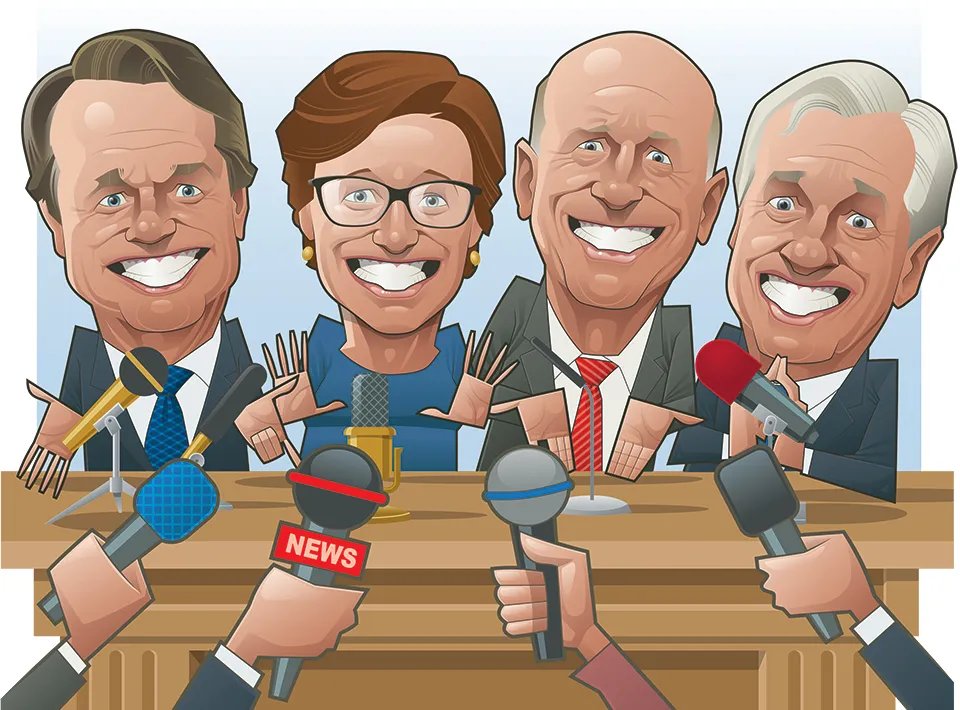In his annual letter to shareholders on April 8, JPMorgan CEO Jamie Dimon warned that inflation remains a threat and that rates could go up. Two days later, a strong US consumer price-index number upended expectations of rate cuts by the US Federal Reserve for the remainder of this year.
Dimon may have felt vindicated, but when JPMorgan opened the first-quarter earnings season for Wall Street banks at the end of the same week, its share price saw the biggest dip in four years due to a cautious outlook on expected net interest income for the rest of the year.
JPMorgan has a history of trying to under promise then overdeliver on key earnings levers. Its absorption of First Republic after the US regional banking crisis of March 2023 is a good example of this policy.
JPMorgan has consistently downplayed the financial benefits of the acquisition and instead stressed the work involved in the integration of the failed bank.
JPMorgan initially signalled that, along with an accounting gain of $3 billion, it expected the acquisition to add around $500 million to annual earnings.

That was clearly a lowball number, but even a shift to an estimate of “closer to $2 billion” for a gain from First Republic for 2024 made in Dimon’s recent shareholder letter was well below the implied run-rate from the first-quarter earnings that were announced just four days later.
The cautious overall net interest income upgrade for this year by JPMorgan to around $89 billion may prove to be a tactic that is rewarded by shareholders if the firm delivers a bigger annual total.
Investors were disappointed at the lack of a clear signal that higher-for-longer rates will boost the bank’s profits, however.
Goldman’s results
Other Wall Street firms took varied approaches to the PR war over the impact of rates that may stay high or push higher – either due to Fed inaction or a market sell-off in Treasuries. Or both.
The clear winner in fixed income trading during the first quarter – before the April shift in rate expectations by markets – was Goldman Sachs, which delivered much stronger than expected results on the back of mortgage and other interest rate spread-product performance.
Fixed income revenues for the first quarter were 10% higher than the same quarter in 2023 and compared favourably with declines of 10% at Citi, 7% for JPMorgan, 6% at Bank of America and 4% for Morgan Stanley.
Fraser and Morton presumably hope that explaining and extolling any future gains in spread product performance will help in their overall goal of increasing the bank’s share price
And Goldman’s total fixed income revenue for the first quarter of $4.32 billion gave it the edge for a second-place ranking after JPMorgan, ahead of Citi’s $4.15 billion.
Goldman highlighted the impact of higher fixed income financing revenues, driven by mortgages and structured lending. Its bigger fixed income intermediation business also benefited from “significantly higher net revenues in mortgages and higher net revenues in currencies and credit products, partially offset by lower net revenues in commodities and slightly lower net revenues in interest rate products.”
Chief executive David Solomon was keen to claim a win and hailed “the strength of our world-class and interconnected franchises and the earnings power of our firm”.
Goldman did not detail the difference between revenue for fixed income spread products, such as mortgages and credit instruments, and core interest-rate products such as swaps and government bonds.
Citi performance
Citi now breaks down its fixed income results between so-called macro and spread products, by contrast, which gives an insight into the gap in performance in the first quarter.
First-quarter revenue from rates and currencies at Citi was $2.79 billion, which was down by 21% from the same quarter in 2023, while spread products such as credit trading generated $1.35 billion, for a rise of 26% from the same quarter last year.
Citi recently unified its spread products business lines and can already point to strong performance by the group.
Citi chief executive Jane Fraser and markets head Andrew Morton presumably hope that explaining and extolling any future gains in spread product performance will help in their overall goal of increasing the bank’s share price – including its valuation relative to assets.
One of Bank of America’s goals is to convince investors that higher-for-longer rates will not stress its balance sheet by increasing losses on its securities holdings, which are higher in proportion to its size than those of its main competitors.
Moynihan and Borthwick continued to project a Zen-like air of calm about the impact of higher rates
Chief executive Brian Moynihan and his chief financial officer Alastair Borthwick did a good job of reassuring investors about the impact of nominal securities losses during the regional banking crisis in 2023.
They continued to project a Zen-like air of calm about the impact of higher rates during Bank of America’s first-quarter earnings call on Tuesday.
Borthwick pointed out that the bank’s held-to-maturity portfolio of Treasuries and mortgage-backed securities continues to decline in size, and that by the end of the first quarter, the total of $587 billion was down by $96 billion from its peak in 2021 and by $38 billion from the same quarter last year.
He added that while the available-for-sale securities portfolio had increased to $323 billion at the end of the first quarter, it is almost entirely hedged with swaps to floating rate, which would reduce the impact of a further rise in market rates.
Borthwick was cautiously optimistic about long-term prospects for net interest income, projecting a rise for BofA in the second half of this year after a temporary dip in the second quarter.
“We have made the balance sheet more liquid, so we can grow net interest income over time,” he said.
Moynihan, for his part, downplayed the prospect that a renewed rise in rates will spur a fresh move by depositors of different types to seek higher-yielding accounts.
“A lot of the market has already moved, we don’t expect a massive change in how deposits are structured,” he told analysts on the earnings call.
Comfortable cushion
BofA, like its main competitors among the biggest US banks, has certainly been able to maintain a comfortable cushion between the rates it pays on deposits and its own income. The blended yield on its cash and securities holdings at the end of the first quarter was 3.6%, which compared favourably to the total deposit rate it paid of 1.93%.
Neither Moynihan nor Borthwick is prone to exaggeration. On earnings calls they can often seem like dour cop and even dourer cop. Their avoidance of hyperbole can nevertheless work as its own form of PR – a type of communications jujitsu that might seem unfamiliar to a bank head like Solomon at Goldman, who often seems unable to resist trying to exploit whatever market trend is in vogue.
After being asked repeatedly by analysts for detail about the potential impact of higher rates on different parts of BofA, Borthwick decided to keep it simple.
“I would say, generally speaking, higher for longer is better for banks,” he said.




